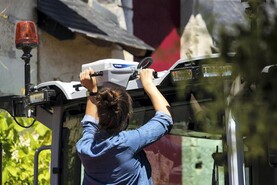There is one huge decision to be made on dairy farms that will affect your future income and the long-term sustainability of your farm, and that is whether you decide to follow Teagasc research or not. The information is quantified and qualified. Millions of euros go into funding Moorepark and farmers are foolish not to reap the rewards. The reality is that the research into cross-breeding, while it might not be what some farmers want to take on board, is absolutely too valuable to ignore.
Knowledge transfer was at its absolute best last week at Teagasc Moorepark’s open day. We wondered how Teagasc could produce an open day that would stimulate us after the 2015 one, with its clear message of making dairy farms sustainable and improving management systems. In 2013 the message was “skill before scale”. These messages are still valid. When you prioritise this open day you are building on your knowledge and keeping up with research. With this in mind, we were ready for the new impetus that we hoped the day would give us.
We were not disappointed, nor were we alone in our thinking. A huge crowd of farming men, women and lots of children spilled off the roundabout by the now four-year-old iconic cows designed by artist Lynn Kirkham. They are standing the test of time well and one of the key messages of the day was: so are dairy farmers. We came through last year and weathered the storm of a very poor milk price. A mild winter and a good spring have been hugely beneficial. Now we won’t get carried away. A few more cents on the milk price would set us up nicely for the next dip. This year the message was about making our farms resilient in the face of challenges. We ticked a lot of boxes, but there are still huge gains to be made.
Dr Pat Dillon, head of animal and grassland research and the Innovation Centre, gave the welcoming address. Part of the expertise of this outfit is Pat’s willingness to be out mixing with farmers, investigating, interacting and listening. The same can be said of all the researchers. Pat laid out the background and change since 2013. The number of dairy farmers has remained static. Cow numbers have increased and national milk production is up. There has been a reduction in the cost of producing milk from 27c/litre down to 22.5c/litre, which offers more protection from volatility. The “cost structure on farms is critical”, he warned. The key is a sustainable, competitive, robust system that is resilient in the face of challenges.
SYSTEM, PEOPLE, GRASS AND GENETICS
The first four boards covered the four key components of good milk production: the system, the people, the grass management and the genetics of the cow. Once the cow is suitable and healthy, the message was as green as ever in that it is all about grass – managing it, grazing it and optimising it. Brendan Horan said that we must be able to absorb the shocks of volatility.
The increased percentage of constituents in Irish milk has already delivered 1.5c/litre to dairy farmers. At home, we continue to focus on raising the milk solids produced per cow. One key message for our farm is to continue to produce and utilise more good-quality grass per hectare. The result is more output for no increased cost in input. We grew 13 tonnes per hectare last year and know that we can push this further. A result of expansion is a young dairy herd, and we see this at home. We expect everything to lift as the cows mature.
Brendan emphasised that we must lift the longevity of the cow to five lactations. This will result in fewer replacements, so less cost in the system and better milk solids from a mature herd. The “gold standard of the grazing system is 90% cows calved in six weeks”.
Other areas to focus on are lifting EBI (Economic Breeding Index) and improving genetics. We’ve been cross-breeding now for 10 years and we are extremely happy with the results. The cows are robust, fertile, with good solids and easy to manage. I sensed a mood of more openness to cross-breeding, especially among young farmers, as discussions progressed on the day.
MESSAGES
One message from Mike Egan was noteworthy. Regarding “soil test results, don’t leave them in the drawer: act on them”.
When it came to the grass management and grazing demonstration, I fell in to Aidan Bugler’s group. I found it excellent, with Aidan pointing out the various covers that had been grazed and the residuals left after grazing. The key message was that cows should always go into grass of 1,400-1,600kg DM/hectare for optimum results. He showed where cows had gone into light crops and explained that the subsequent long-term yield would be compromised. We also saw the results of going into heavy grass and the resultant waste. It was a great session for those starting out on the grass measurement journey. Aidan is a dairy adviser in Co Clare.
Donagh Berry reminded us that EBI underpins the system. “Each €1 lift in EBI delivers €2 net profit.” So it’s a big focus for us.
There was so much valuable information. We will take time to distil it all out. Michael O’Donovan cautioned farmers to set up the farm for grazing at least 255 days a year, and not for the few visits of the contractors. Simple and practical advice. It was a tremendous open day and we will use it as the blueprint for the next two years. CL






 This is a subscriber-only article
This is a subscriber-only article










SHARING OPTIONS: